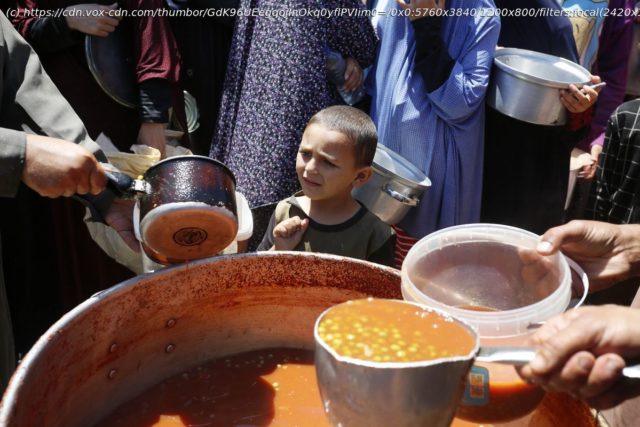And why it’s not nearly enough.
The US Department of Defense has completed a temporary pier off the Mediterranean coast of Gaza to deliver urgently needed aid — an important goal, but really only a $320 million bandage on the humanitarian crisis 2.3 million people are currently facing.
The US military announced that on Thursday at 7:40 am Gaza time the pier had been attached to land; trucks began moving supplies Friday. The World Food Program is coordinating aid delivery.
The purpose of the pier is to facilitate the flow of humanitarian aid into Gaza, which has been erratic and insufficient for the past seven months following Israel’s initial siege on the territory after Hamas’s attack in October. Both Israel and Egypt have closed border crossings at times over the past seven months, and aid groups accuse Israel of restricting the food, clean water, fuel, and medical aid that passes through even when the borders are technically open.
More than 35,000 people have been killed so far in the war already, primarily due to Israeli bombing campaigns.
People in all parts of the region, especially the north, are facing acute levels of hunger. That’s obviously a crisis in and of itself; it also makes people more vulnerable to dying from communicable diseases, particularly because the Israeli campaign has decimated Gaza’s health care system. Clean water is nearly inaccessible; people in Gaza are living on less than 2 liters a day, according to UN estimates, well short of the 7.5 to 15 liters people need each day for basic consumption and sanitation in emergency situations and 70 liters under normal situations.
The pier is expected to deliver primarily food aid, but also treatment for malnutrition, like high-nutrient food bars and other therapeutic foods for acute cases, according to USAID. US officials have also emphasized the need to get clean water and fuel into Gaza, but have not yet provided specifics regarding how and how much of those commodities will enter through the maritime corridor.
To be clear, there are better, more efficient ways to get aid into Gaza, experts say. The US can use its leverage — access to weapons — with Israel to increase aid via land routes. It could push for a ceasefire agreement that would allow humanitarian organizations to deliver aid in exchange for Hamas releasing hostages it took during its October 7 attack on Israel.
The fact that the US has to resort to building a pier to get aid into Gaza underscores how fraught the US-Israeli relationship has become — and how the Biden administration seems unable or unwilling to make any broader changes in its policy toward Israel.How will the pier work?
Biden first announced the plans for the maritime corridor in his State of the Union address on March 7, emphasizing the immense need for humanitarian aid in Gaza.






